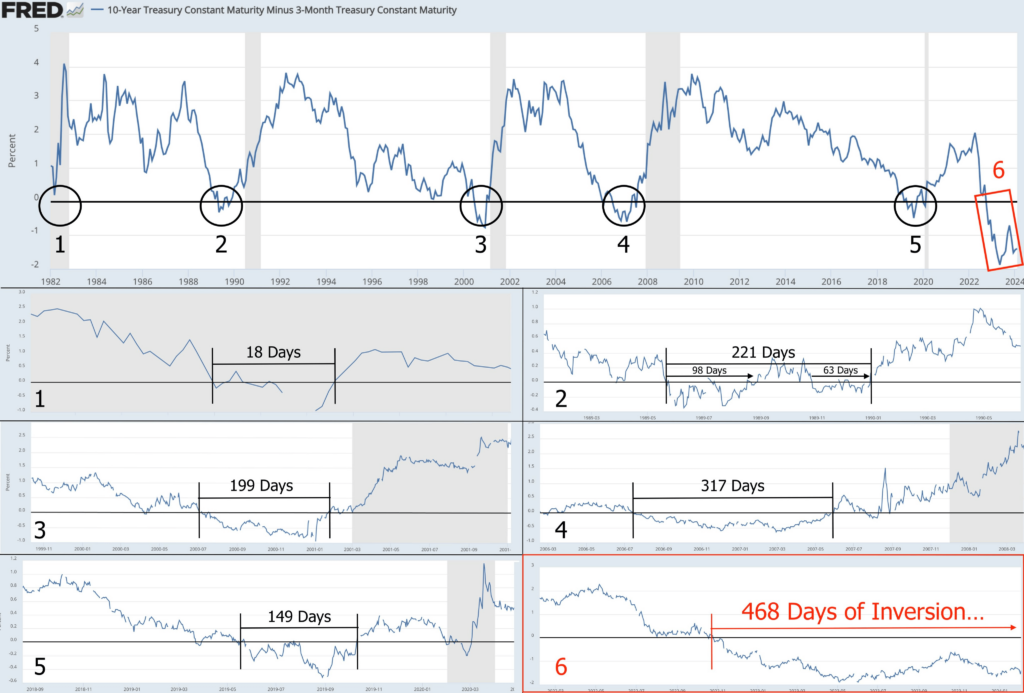In the equity market, stocks continue to reach new highs despite occasional setbacks. However, the bond market is signaling a different story.
This week, the yield on short-term Treasury debt rose more quickly than that on long-term Treasury debt. By May 24 close, two-year Treasury notes were yielding 47.9 basis points more than 10-year Treasury notes, up from a 45.9 basis point difference on the day before. This marks the most significant gap this year.
The inversion of the yield curve, a phenomenon where short-term yields surpass long-term ones, is not just a typical sign of tougher economic times ahead. It is a historical one. The current inversion is the longest in U.S. history, with no signs of abating.

The lack of interest cuts shifted the tide for the U.S. Treasuries
Actions undertaken by the Federal Reserve have affected short-term yields, and recent comments from Fed officials have dispelled hopes for a summer rate cut. Expectations of prolonged high near-term rates due to the Fed’s inflation fight and strong unemployment data have pushed the two-year yield close to 5%.
There are two main reasons why the 10-year yield, which reflects economic growth expectations, lags behind the two-year yield, deepening the curve inversion.
The first reason is a weakening economic outlook, while the second reason is influenced by the Fed and mixed recent data.
Expectations of an economic slowdown, which could lead to rate cuts, may prompt investors to buy long-term debt to lock in current yields.
Next week could be crucial for the U.S. Treasuries
Starting in June, the Federal Open Market Committee will let $25 billion of its bond holdings mature monthly without reinvesting, down from $60 billion. This means more Fed money will flow into the Treasury market, potentially driving up prices and lowering yields.
The New York Fed’s data shows that 34% of the Fed’s Treasury holdings mature in 10 years or more, the highest allocation among maturities.
Next week’s Treasury auctions are not just events to keep an eye on. They are crucial moments that could potentially shift the tide.










